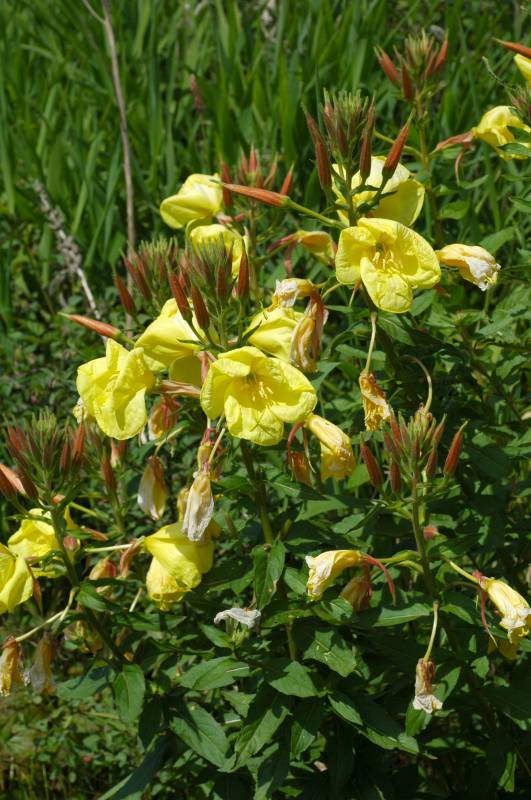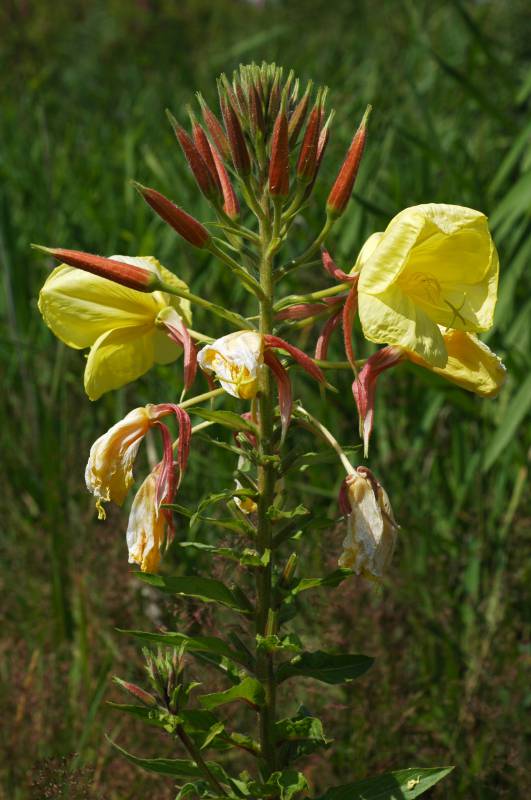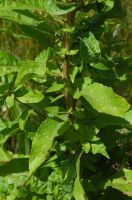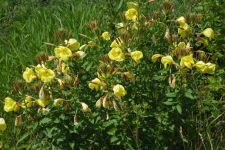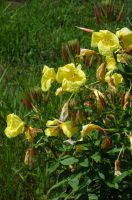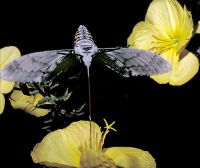Distribution: Occurring west of the Cascades crest in Washington; British Columbia to California; also in scattered locations in the eastern U.S.
Habitat: Disturbed soil.
Flowers: June-September
Origin: Introduced from Europe
Growth Duration: Biennial
Conservation Status: Not of concern
Pollination: Bees, moths
Large, erect biennial, the stem with conspicuous red blotches and numerous red-based hairs.
Leaves alternate, lanceolate, strongly crinkled, petiolate, the blades 5-10 cm. long and about 1/3 as wide, the mid-rib white.
Flowers in elongate, bracteate spikes; calyx tube red-striped, over 2 cm. long, the 4 lobes distinct, reflexed, 2.5-4 cm. long; petals yellow, fading to reddish, 3-5 cm. long, slightly notched; stamens 8; styles longer than the stamens; stigmas with 4 linear lobes 4-6 mm. long; ovary inferior, 4-celled.
Capsule tapering to the tip.
Publication: Flora Brasiliensis 13(2): 178. 1875.
PNW Herbaria: Specimen records of Oenothera glazioviana in the Consortium of Pacific Northwest Herbaria database.
WA Flora Checklist: Oenothera glazioviana checklist entry.
OregonFlora: Oenothera glazioviana information.
E-Flora BC: Oenothera glazioviana atlas page.
CalPhotos: Oenothera glazioviana photos.
USDA Plants: Oenothera glazioviana information.


